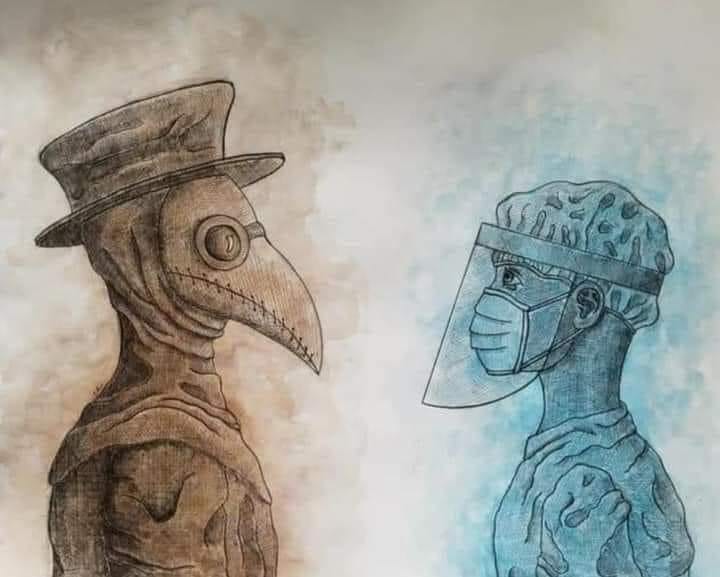
by Moe | Jul 26, 2021 | Mystical Christianity, Toxic Mold
The word leprosy is derived from the Greek lepra, which means spotted or stained and represents an ancient illness and disease known for millennia. Whole cities, houses, and even entire islands worldwide up until the 1900s were specifically designated by government and church authorities to segregate the sick lepers from the rest of the healthy population.

Not only people could get leprosy, but also their clothes and homes would become leprous via green, white (lepra alba), and red spots that they had to destroy if the stuff did not keep growing. I contend that this disease, medical practices, and remediation techniques have been carried out well over 2,000 years up until this very day.
The Father of Medicine, Hippocrates, calls it “the Phoenician disease,” and Galen said it was “elephantiasis.” I believe it is really a fungal disease due to Toxic Molds. What the CDC called last week, “Transmission of Pan-Resistant and Echinocandin-Resistant Candida auris in Health Care Facilities ― Texas and the District of Columbia.”
In studying the etymology of leprosy before the Greeks had called this disease lepra, the Phoenician Hebrews (Canaanites) had called it by the name tsara or tsarath in the Old Testament/Tora. The Coptic name for leprosy is tseht and the disease is described in the Papyrus Ebers as ukhedu. It is also mentioned in ancient Indian and Japanese history.
The Hebrew Tzaraath describes disfigurative conditions of the skin, hair of the beard and head, clothing made of linen or wool, or stones of homes located in the land of Israel in chapters 13–14 of Leviticus.
The first Old Testament mention of this disease is a sign given by God to the Hebrew Lawgiver Moses (Exodus 4:6 (Jahwist)), who was not only a king and priest but also a sick man with Leprosy aka Mold/Fungi. In the third Book of Exodus xi chapter, 4th verse, we learn, “Whence one cannot but smile at those who say that Moses was himself afflicted with the leprosy when he fled out of Egypt.”
Hence, Moses was expelled from Heliopolis on account of his being a leper (see also I, 26 and Ant, III, xi, 4). The second case is that of Miriam (Numbers 12:10), where the disease is graphically described (EP2).
The word tsara’at appears approximately two dozen times in the Hebrew Bible, almost exclusively in Leviticus, describing how it infects people, clothes, and people.
We find in the Greek Septuagint, the translation of the Hebrew Bible, negac tsara’at was translated in Greek as aphe lepras, and later in the Latin Vulgate, this became plega leprae. The word Tsara’at has continued to be translated as “leprosy,” even though the word leprosy was not known in the Mediterranean when the Hebrew Bible was written.
Other scholars have suggested that the proper translation of tsara’at is “mold or fungi” and I agree.
There is now a tremendous amount of science and research we have showing that molds contaminate (defile) buildings and cause respiratory distress, memory loss, and spots in the form of rashes, pimples, ulcers, and cancer in humans, and the fact that mold has been present since the beginning of time, validate the translation of tsara’at and the later lepra as “molds/fungi.”
These modern references can be compared to the Scripture like in Leviticus 14:45 to mildew defiling a place to live in, so drastic measures had to be taken.
In Leviticus, we learn an all-out effort by the ruling class and priesthood to cleanse Isreal of mildew/mold and leprosy, which seem to go hand in hand. Drastic measures were taken to inspect homes, people and make judgments or final inspection reports on all reported cases. If the home and people were found to have mildew or to contain leprosy, they were officially pronounced unclean and set for destruction and/or banishment from the community.
Today, leprosy can be compared to the Corona Virus/COVID, or what I feel is more appropriate, toxic mold/Super fungus that the Centers of Disease Control (CDC) is calling, “Transmission of Pan-Resistant and Echinocandin-Resistant Candida auris in Health Care Facilities.”
We can compare COVID patients to the Leper because people who contracted this disease were officially pronounced unclean (COVID positive) and were isolated from the community. The word unclean was a word that did not just describe a person who was infected, but it was what they did and how they lived that caused the disease. The English word unclean is derived from the Greek akathartos; impurity (the quality), physically or morally — uncleanness.
Also, people who have COVID have similar symptoms in Leviticus 13; 14; Numbers 12:10-15 under which the disease might develop itself:
- Without any apparent cause (Leviticus 13:2-8)
- Its reappearance (9-17)
- From inflammation (18-28)
- On the head or chin (29-37)
- In white polished spots (38, 39)
- At the back or in the front of the head (40-44)
Like leprosy, COVID and certain pathogenic fungi also cause inflammation in victims, with the main feature being lung inflammation and respiratory failure caused by an overexuberant immune response. This may lead to “multisystem inflammatory syndrome in children (MIS-C) , which is a serious condition associated with COVID-19 where different body parts can become inflamed, including the heart, lungs, kidneys, brain, skin, eyes, or gastrointestinal organs.
COVID patients also get spots like lepers via red and white spots in the mouth and throat, and it also has the ability to reinfect people who have recovered from a previous illness. We are also treating modern COVID patients like we would the Lepers in the past. I assume soon, we may take this remediation program to the next level like they did back in the days of Moses when the Lepers were often banished to special cities and islands to be officially segregated from the rest of the world indefinitely.
You must distinguish between the unclean and the clean. – Leviticus 11:47
Moe is the founder of GnosticWarrior.com. He is a father, husband, author, martial arts black belt, and an expert in Gnosticism, the occult, and esotericism.

by Moe | Jul 26, 2021 | Government, Health, Toxic Mold
A new CDC press release is warning people of a possible new Pan-demic via a fungus/mold that seems to mimic the symptoms of Leprosy found in the Scripture. A mold that is transmissible from person to person and maybe the new global threat.
“This is really the first time we’ve started seeing clustering of resistance” in which patients seemed to be getting the infections from other patients, said the CDC’s Dr. Meghan Lyman, an author of the report.
A resistance that has been dubbed “pan-resistant” because like in Ancient Greece and Greco-Egypt, the God Pan had signified “all things.” Pan was often considered as the great principle of vegetable and animal life and his city was known as Panopolis.
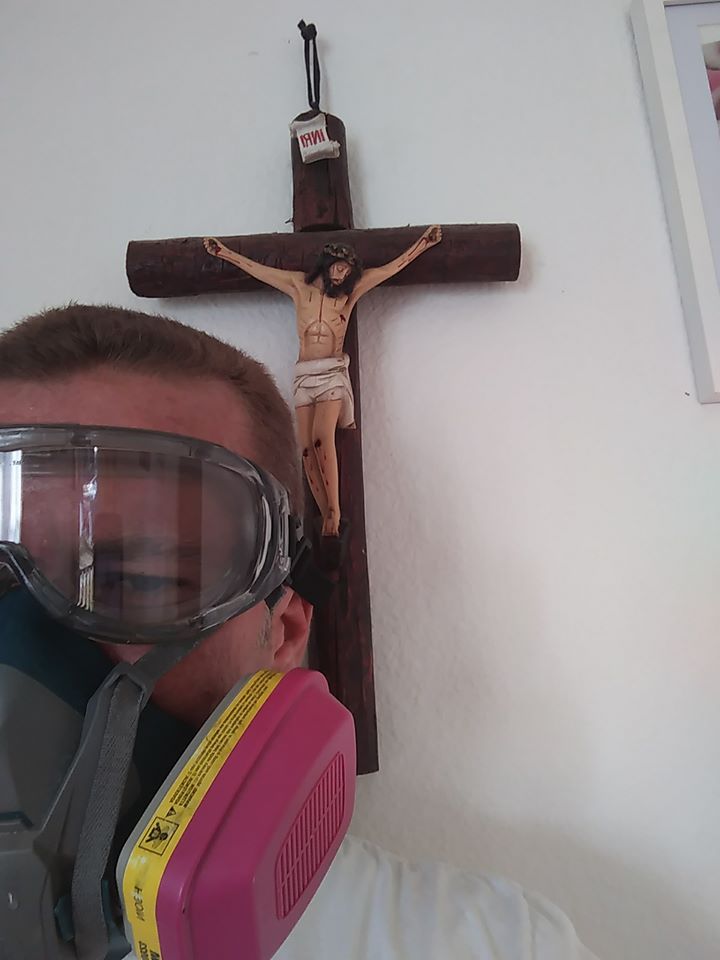
It is resistant of all things but the secret old meaning of the name Pan is an old word denoting to close or join together.
From January through April of 2021, Washington, DC, had 101 reported cases of C. auris and Texas had 22, according to Thursday’s edition of the Centers for Disease Control and Prevention (CDC) Morbidity and Mortality Weekly Report (MMWR).
“Surveillance, public health reporting, and infection control measures are critical to containing further spread,” the report said, while noting that “data are lacking” about how to treat cases that are resistant to all current drugs.
The title of the July 23. 2021 release is, “Transmission of Pan-Resistant and Echinocandin-Resistant Candida auris in Health Care Facilities ― Texas and the District of Columbia.”
According to the CDC, “Candida auris is an emerging, often multidrug-resistant yeast that is highly transmissible, resulting in health care–associated outbreaks, especially in long-term care facilities. Skin colonization with C. auris allows spread and leads to invasive infections, including bloodstream infections, in 5%–10% of colonized patients (1).
Three major classes of antifungal medications exist for treating invasive infections: azoles (e.g., fluconazole), polyenes (e.g., amphotericin B), and echinocandins. Approximately 85% of C. auris isolates in the United States are resistant to azoles, 33% to amphotericin B, and 1% to echinocandins (2), based on tentative susceptibility breakpoints.*
Echinocandins are thus critical for treatment of C. auris infections and are recommended as first-line therapy for most invasive Candida infections (3). Echinocandin resistance is a concerning clinical and public health threat, particularly when coupled with resistance to azole and amphotericin B (pan-resistance).
Pan-resistant C. auris isolates have been reported previously, although rarely, from the United States (4) and other countries (5). Three pan-resistant C. auris cases reported in New York developed resistance following echinocandin treatment and lacked epidemiologic links or common health care (4), suggesting that resistance resulted from antifungal pressure rather than via person-to-person transmission. Since January 2021, however, the Antibiotic Resistance Laboratory Network has detected independent clusters of pan-resistant or echinocandin-resistant cases in Texas and the District of Columbia (DC). Each cluster involved common health care encounters and no known previous echinocandin exposure, suggesting transmission of pan- and echinocandin-resistant strains for the first time in the United States.
Among 101 clinical and screening cases of C. auris† in DC during January–April 2021, three had an isolate that was pan-resistant. All resistant isolates were identified through skin colonization screening at one long-term care facility for severely ill patients, including those requiring mechanical ventilation.
Among 22 clinical and screening cases of C. auris in Texas during the same period, two were pan-resistant and five were resistant to both echinocandins and fluconazole. These seven cases were identified in patients who were cared for at two facilities that share patients in the same city; two patients were at a long-term acute care hospital, three at a short-term acute care hospital, and two at both facilities. Among these cases, four were identified through colonization screening and three through clinical isolates (two blood isolates and one wound isolate).
No known epidemiologic links were identified between the Texas and DC clusters. No patients with pan- or echinocandin-resistant isolates in either cluster had received echinocandins before C. auris specimen collection. Thirty-day mortality in both outbreaks combined was 30%, but the relative contribution of C. auris was unclear.
These two simultaneous, independent clusters of pan- or echinocandin-resistant C. auris cases in patients with overlapping inpatient health care exposures and without previous echinocandin use provide the first evidence suggesting that pan- or echinocandin-resistant C. auris strains might have been transmitted in U.S. health care settings. Surveillance, public health reporting, and infection control measures are critical to containing further spread. Clinicians should consider early antifungal susceptibility testing in patients with C. auris infection, especially in those with treatment failure.
Data are lacking about the most appropriate therapy for pan-resistant infections. Combination and investigational antifungal treatments can be considered, but evidence in clinical settings is limited (6). More information is needed to evaluate patient outcomes and identify proper treatment for C. auris cases with pan-resistance or echinocandin resistance.”
Moe is the founder of GnosticWarrior.com. He is a father, husband, author, martial arts black belt, and an expert in Gnosticism, the occult, and esotericism.

by Moe | Jun 2, 2021 | Demons, Health, Toxic Mold, Walk and Talks
Francis Bacon was a student of nature and philosophy whose teachings have made him one of the Fathers of Modern Science. He had written about what he called two imperfect plants being, “moss and next to it, Mushrooms.”
Today we would know of moss as molds or fungi and its fruiting body is still called a ‘Mushroom.’
It is from Mushrooms that Bacon claimed people had suffered from Incubus or Night-Mares in the stomach.
Here is my latest walk and talk discussing Bacon’s findings and the science. Below my video is the statement by Bacon and also other quotes.
Francis Bacon had written:
Next unto moss, I will speak of mushrooms; which are likewise an imperfect plant.
The mushrooms have two strange properties; the one, that they yield so delicious a meat; the other, that they come up so hastily, as in a night; and yet they are unsown.
And therefore such as are upstarts in state, they call in reproach mushrooms.
It must needs be, therefore, that they be made of much moisture; and that moisture fat, gross, and yet somewhat concocted.
And, indeed, we find that mushrooms cause the accident which we call incubus, or the mare in the stomach.
And therefore the surfeit of them may suffocate and poison.
And this sheweth that they are windy; and that windiness is gross and swelling, not sharp or griping. And upon the same reason mushrooms are a venereous meat.
According to Bacon, older plants grow more moss because their vigor is diminished:
“Old trees are more mossy far than young; for that the sap is not so frank as to rise all to the boughs, but tireth by the way and put out moss.”
The signs of moss are linked to stagnation, the diminished vitality of the tree results in the exteriorization of sap from the interior portion of tree.
Like Bacon, St. Hildegard similarly writes in her Physica: “When trees grow old, they begin to lose their inner greenness (viriditas), and if they are not young, they send the greenness and health, which they ought to have inside, to the exterior bark.”
As I explained in my article, Demons Who Feed On Human Energy, according to Paracelsus, the incubus and succubus (which are male and female respectively) are parasitical creatures subsisting upon the evil thoughts and emotions of the astral body.
These terms are also applied to the superphysical organisms of sorcerers and black magicians.
While these larvæ are in no sense imaginary beings, they are, nevertheless, the offspring of the imagination.
By the ancient sages, they were recognized as the invisible cause of vice because they hover in the ethers surrounding the morally weak, and continually incite them to excesses of a degrading nature.
Frantz Hartman had said, “Incubus and Succubus – Male and female parasites growing out of the astral elements of man or woman in consequence of a lewd imagination.”
Manly P. Hall had said they are sometimes referred to as in Latin, Incubus and Succubus, and in English, it is named the “Mare.”
Male and female parasites.”
Moe is the founder of GnosticWarrior.com. He is a father, husband, author, martial arts black belt, and an expert in Gnosticism, the occult, and esotericism.

by Moe | May 31, 2021 | Drugs, Health, Toxic Mold
“Killer viruses and antibiotic-resistant bacteria aren’t the only infectious threats we face – deadly fungi are coming for us too,” warns Nic Fleming

A U.S. Centers for Disease Control and Prevention (CDC) physician and an epidemiologist, Tom Chiller, has been working in the effort against COVID is warning Americans of a new potential pandemic that is said to be much worse than COVID and some states have gone on high alert, according to the Scientific American.
This new global threats are molds/fungi like Aspergillus and Candida auris which the CDC says resembles the Black Plague.
Fungal microbes that are coinfecting COVID patients and are much more deadly than the virus.
“We have an enormous blind spot,” says Arturo Casadevall, a physician and molecular microbiologist at the Johns Hopkins Bloomberg School of Public Health.
“Walk into the street and ask people what are they afraid of, and they’ll tell you they’re afraid of bacteria, they’re afraid of viruses, but they don’t fear dying of fungi.”
Attempting to find solutions to this new threat, Chiller consulted with his peers in other countries where the fungus invaded their healthcare systems, causing fast-spreading outbreaks that killed up to two-thirds of the people who contracted it. The problem was that no drug and cleaning agents seemed to work at killing the fungus, and once it contaminated the hospitals and equipment, they had to rip it out and take it to the dump.
Some experts compare these fungal infections to the “creature from the black lagoon and the new Black Plague.
An epidemiologist from Imperial College, London – Johanna Rhodes, said that the fungus could survive on surfaces for long periods. “One of the things that make Candida Auris so scary is the fact it can linger on inanimate surfaces for long periods and withstand whatever you throw at it,” Rhodes said.
Rhodes was one of the scientists involved in containing a fungus outbreak in the UK in 2016. The fungus was compared to the Black Plague only after a CDC doctor found that the fungal makeup resembled substances that are found in lagoons, and other areas brimming with bacteria.
“It is a creature from the black lagoon. It bubbled up and now it is everywhere,” Dr. Tom Chiller said.
The Scientific American reports;
Accounts of infections trickled back from India, Italy, Colombia, Germany, Austria, Belgium, Ireland, the Netherlands, and France. Now the same deadly fungi were surfacing in American patients as well: the first signs of a second epidemic layered on top of the viral pandemic.
And it wasn’t just C. auris.
Another deadly fungus called Aspergillus was starting to take a toll as well.
“This is going to be widespread everywhere,” Chiller says. “We don’t think we’re going to be able to contain this.”
Warning networks that link infectious disease doctors and mycologists around the globe lit up with accounts of aspergillosis taking down patients afflicted with COVID: in China, France, Belgium, Germany, the Netherlands, Austria, Ireland, Italy, and Iran. As challenging a complication as C. auris was, Aspergillus was worse. C. auris lurks in hospitals.
The place where patients were exposed to Aspergillus was, well, everywhere. There was no way to eliminate the spores from the environment or keep people from breathing them in.
In Baltimore, physician Kieren Marr was acutely aware of the danger. Marr is a professor of medicine and oncology at Johns Hopkins Medical Center and directs its unit on transplant and oncology infectious diseases. The infections that take hold in people who have received a new organ or gotten a bone marrow transplant are familiar territory for her.
When COVID arrived, she was concerned that Aspergillus would surge—and that US hospitals, not alert to the threat, would miss it. Johns Hopkins began testing COVID patients in its ICU with the kind of molecular diagnostic tests used in Europe, trying to catch up to the infection in time to try to treat it. Across the five hospitals the Johns Hopkins system operates, it was found that one out of 10 people with severe COVID was developing aspergillosis.
Several patients died, including one whose aspergillosis went to the brain. Marr feared there were many others like that patient across the country, whose illness was not being detected in time.
“This is bad,” Marr said this spring.
“Aspergillus is more important in COVID right now than C. auris. Without a doubt.”
The CDC estimates that 300 million people are infected globally with fungal diseases and 1.6 million deaths every year—more than malaria, as many as tuberculosis. Estimates in the US are approximately 75,000 people are hospitalized annually for a fungal infection, and another 8.9 million people seek an outpatient visit, costing about $7.2 billion a year.
“The past five years really felt like we were waking up to a whole new phenomenon, a fungal world that we just weren’t used to,” Chiller says. “How do we stay on top of that? How do we question ourselves to look for what might come next?
We study these emergences not as an academic exercise but because they show us what might be coming. We need to be prepared for more surprises.”
Moe is the founder of GnosticWarrior.com. He is a father, husband, author, martial arts black belt, and an expert in Gnosticism, the occult, and esotericism.
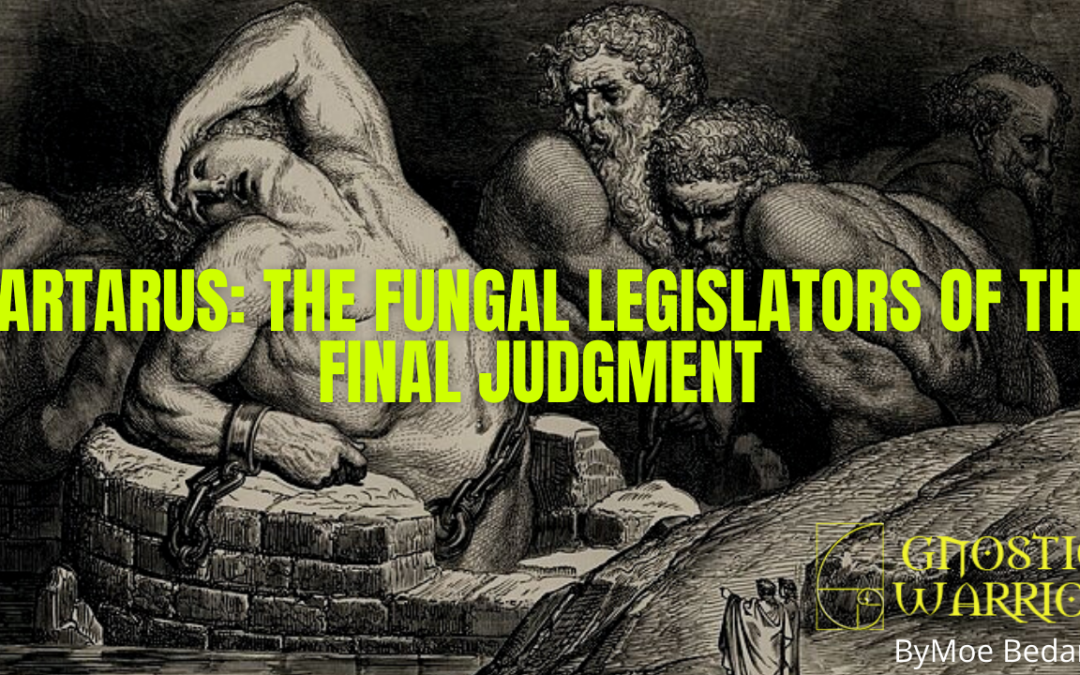
by Moe | May 28, 2021 | Demons, Hell, Toxic Mold
“For if God did not spare angels when they sinned, but cast them into Tartarus (hell) and committed them to chains of gloomy darkness to be kept until the judgment.” (2 Peter 2:4)
The teachings of Hell as a place of torment for sinners and the damned in Christianity come down to us originally from the Ancient Egyptians, Phoenicians, Greeks, and Romans. In Ancient Greece with some of the Greatest Philosophers of all time, from the era of Homer to Hesiod to Plato, this Tradition and what I contend is a theological science about a spiritual prison for humans called Tartarus (Tartaros) was fully developed.
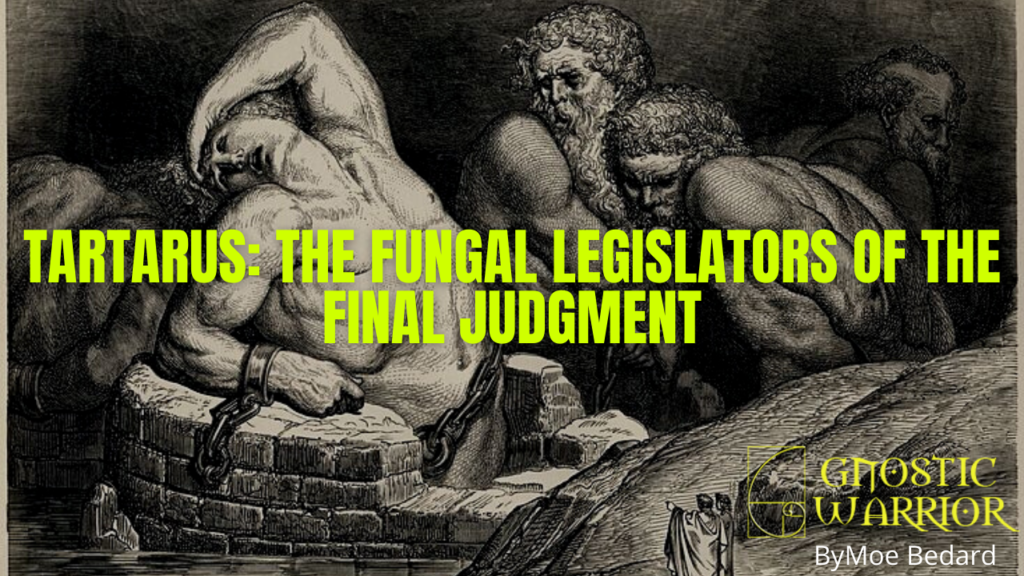
In the Scripture, Tartarus (Tartaros) is said to be the place where 200 fallen Watchers (angels) are imprisoned in an underground abyss reserved for demons, sinners, and the dead. In Enoch, we learn that God placed the archangel Uriel “in charge of the world and of Tartarus” (20:2).
Uriel is the angel “over the world and Tartarus” (ho epi tou kosmou kai tou tartarou), and as such, the conductor to Enoch in the world below secrets of which he explains. In the lost “Prayer of Joseph,” Uriel is the angel who wrestles and converses with Jacob and knows the secrets of heaven, and he is entrusted with the judgment of the Titans.
The meaning of the name Uriel (Ouriel) is “fire or flame of God” or “my light is God”)

Tartarus in Greek mythology is the deep abyss and a type of underground dungeon of torment and suffering for the wicked and as the prison for the Titans and in later myths, for mortals who committed unforgivable sins. According to the Greek poets, Homer and Hesiod, Tartarus is a type of spherical force that reaches the great cosmic pit beneath the earth.
It is located “as far beneath the house of Hades as from earth the sky lies, and he is both a deity (god or force) and a place in the underworld.”
The Greeks imagined the cosmos to have been egg-shaped or spherical, and Tartarus was said to have been an inverted dome with the upper half of this sphere forming the dome of heaven, whilst the bottom half formed the pit of Tartarus.
In Homer’s Iliad (c. 8th century BC), Zeus asserts that Tartarus is “as far beneath Hades as heaven is above the earth.” According to the Homeric Hymn to Hermes, The God of Light, Apollon threatens to cast the infant god Hermes into Tartaros for stealing his cattle;
“For I will take and cast you into dusky Tartaros and awful hopeless darkness (zophon), and neither your mother nor your father shall free you or bring you up again to the light, but you will wander under the earth and be the leader amongst little folk (shades/ghosts of children in Hades).”
Hesiod (c. 700 BCE) depicts it as Misty Tartarus’, stating that it was “as far below the earth as heaven is from the earth” (722-25). He describes Tartarus “as a vast chasm, both dismal and dank and a place of decay,” and states, “Tartarus is one of the first beings to have emerged at the creation of the universe and was the opposite of Gaia (Earth).”
Hesiod describes it further as the unfruitful sea (pontos) where there are shining gates and an immoveable threshold of bronze having unending roots, and it is grown of itself. And beyond, away from all the gods, live the Titans, beyond gloomy Khaos.” He says that the edge of the cosmos is where the flat disc of the earth meets the descending dome of the sky and the ascending walls of the pit of Tartaros.
“The sky-dome and Tartarean pit surround the cosmos in an egg-shaped shell with Tartaros descending as far beneath the earth as the sky rises up above it.”
According to Plato’s Gorgias (428/7-348/7 BCE), the souls who were deemed impious and unjust by the judges of the dead (Rhadamanthus, Aeacus, and Minos), would be sent to Tartarus and eternally damned. In his Phaedo, Plato states that all of the rivers run through the chasm of Tartarus, and then they flow back out of it through the earth.
Roman mythology describes a pit inside extending down into the earth twice as far as the distance from the lands of the living to Olympus. The twin sons of the Titan Aloeus were said to be imprisoned at the bottom of this pit.
Tartarus is also considered a primordial force or God and the unbounded first-existing entity from which the Light and the cosmos are born. He is described as a deity or the God of Abyss and ruled with his sister, Gaia, the Goddess or first Mother of the earth. He was the son of Aether and Hemera, who descended from chaos – the first God.
Meaning, he was considered as existing at or from the beginning of time who came from the stormy pit of Tartaros that lies beneath the foundations of the earth.
In ancient Orphic sources and the mystery schools, Tartarus is also the unbounded first-existing entity from which the Light and the cosmos are born. According to Plato, Tartarus is the place where souls are judged after death and where the wicked received divine punishment. (Plato’s Gorgias)
Virgil describes Tartarus as expansive, surrounded by three perimeter walls, beyond which flows a flaming river named “the Phlegethon. To further prevent escape, a hydra with fifty black, gaping jaws, sits atop a gate that screeches when opened. They are flanked by adamantine columns, a substance that, like a diamond, is so hard, nothing can cut through it.
Virgil had written, “[The ghost of Anchises appears to his son Aeneas in a dream :] ‘Approach the nether halls of Dis [Haides], and through the depths of Avernus seek, my son, a meeting with me. For impious Tartarus, with its gloomy shades, holds me not, but I dwell in Elysium amid the sweet assemblies of the blest.” (Virgil, Aeneid 5. 731)
Carl Jung had written in The Red Book about his experience of descending into Tartarus where the color black/nigredo plays a predominant role in Jung’s initial plunge into Hell where this black water or dirt covers the cave, and he witnesses a subterranean Sun or fire which he has been tasked with to capture.
Jung describes his visions in Tartarus as a hellish landscape with a blackness/nigredo substance up to his ankles with pools of red blood, terrible noises, screams, and dead bodies floating within it as black scarab floats by on the dark stream.
There seems to be an exit or a way out of this Hell via a red stone that he first symbolized as a subterranean Sun or fire covering an opening, which Jung removes and holds it in his hands. Jung had written;
“I see a gray rock face along which I sink into great depths. I stand in black dirt up to my ankles in a dark cave. Shadows sweep over me. I am seized by fear, but I know I must go in. I crawl through a narrow crack in the rock and reach an inner cave whose bottom is covered with black water. But beyond this, I catch a glimpse of a luminous red stone which I must reach. I wade through the muddy water. The cave is full of the frightful noise of shrieking voices.
I take the stone, it covers a dark opening in the rock.
I hold the stone in my hand, peering around inquiringly. I do not want to listen to the voices, they keep me away, but I want to know. Here something wants to be uttered. I place my ear to the opening. I hear the flow of underground waters. I see the bloody head of a man on the dark stream. Someone wounded, someone slain floats there. I take in this image for a long time, shuddering. I see a large black scarab floating past on the dark stream.”
In the Secret Teachings of All Ages, Manly P. Hall connects Tartarus with the concepts of the monad – as the origin or the first thought and all thoughts as the beginning and end of all. It is the receptacle of matter which produces chaos and also the planet Jupiter which he states, “the great power which abides in the center of the universe and controls the circular motion of the planers about itself.”
Hall had written;
Monad–1–is so-called because it always remains in the same condition–that is, separate from the multitude. Its attributes are as follows: It is called mind, because the mind is stable and has preeminence; hermaphrodism, because it is both male and female; odd and even, for being added to the even it makes odd, and to the odd, even; God, because it is the beginning and end of all, but itself has neither beginning nor end; good, for such is the nature of God; the receptacle of matter, because it produces the duad, which is essentially material.
By the Pythagoreans, the monad was called chaos, obscurity, chasm, Tartarus, Styx, abyss, Lethe, Atlas, Axis, Morpho (a name for Venus), and Tower or Throne of Jupiter, because of the great power which abides in the center of the universe and controls the circular motion of the planers about itself.
Monad is also called germinal reason because it is the origin of all the thoughts in the universe. Other names given to it were: Apollo, because of its relation to the sun; Prometheus, because he brought man light; Pyralios, one who exists in fire; geniture, because without it no number can exist; substance, because substance is primary; cause of truth; and constitution of symphony: all these because it is the primordial one.”
In the Greek Comedy, Aristophanes, Frogsdated from the 5th to 4th B.C. had stated:
“[Aiakos (Aeacus), the gatesman of Haides, threatens the god Dionysos with imprisonment in the dungeons of Hell :] ‘The black hearted Stygian rock and the crag of Akheron (Acheron) dripping with gore can hold you; and the circling hounds of Kokytos (Cocytus) and the hundred-headed serpent (ekhidna) [probably Typhoeus] shall tear your entrails; your lungs will be attacked by the the Tartesian Eel (Myraina Tartesia) [probably Ekhidna], your kidneys bleeding with your very entrails the Teithrasian Gorgones will rip apart.'”
Here is some more text from the Homeric Hymn to Pythian Apollo;
“Hera prayed, striking the ground flatwise with her hand, and speaking thus : ‘Hear now, I pray, Gaia (Gaea) and wide Ouranos (Uranus) above, and you Titan gods (Titanes theoi) who dwell beneath the earth about great Tartaros, and from whom are sprung both gods and men! Harken you now to me, one and all.'”
THE MEANING & ETYMOLOGY OF THE WORD TARTARUS
The word Tartarus is composed of the words “tar, tar, and “us or os”
According to Webster’s Dictionary, Tar is found in the Bible to mean “a thick, black, viscous liquid obtained by the distillation of wood, coal, etc., and having a varied composition according to the temperature and material employed in obtaining it.”
It is related to the word ‘atar,’ which means [אָטַר] verb shut up, close, bind or enclose (Arabic bend, curve, what surrounds, encloses. It is related to the word tardemeh תַּרְדֵּמָה noun feminine deep sleep; — absolute ׳ת Genesis 2:21 +; construct תַּרְדֵּמַת 1 Samuel 26:12; — deep sleep, usually with נָפַל + עַל person, and usually by supernatural agency: עַל ׳ת ׳א ׳וַיַמֵּל י Genesis 2:21 (J; ᵐ5 ἔκστασις), נָָֽפְלָח עַל ׳ת Genesis 15:12 (J; ᵐ5 id.), Job 4:13 = Job 33:15 (ᵐ5 [δεινὸς], φόβος), so ׳תַּרְדֵּמַת י 1 Samuel 26:12 (ᵐ5 θάμβος, the result of slothfulness (על and person omitted) Proverbs 19:15; figurative for insensibility of spirit, ׳רוּחַ ת ׳נָסַךְ עֲלֵיכֶם י Isaiah 29:10.
The Hebrew word is radam, which means “to fall or fall into, heavy sleep” related to [רָדַם] verb Niph’al of sleep of death Psalm 76:7; stunning effect of awe and dread Daniel 8:18; Daniel 10:9 (both + אָ֑רְצָה [ וּפָנַי ] עַלמָּֿנַי.
Matar means to kill.
The meaning of the word tar (πίσσα) tar is also pitch and spelled in Greek as pissa, which is another word for pitch and bitumen. These words are all synonyms with “coal or creosote.”
In the Scripture, this Tar is related to a particular substance called “slime, Bible Slime or Bitumen.” It is sometimes used to mix in with the brick and mortar to build the “Tower of Babel,” and is made in what was called “tar pits” and sometimes the “lake of Sodom” in ancient Babylonia.
The word slime is also variously translated as meaning “bitumen” in the Latin Vulgate and as “chomer or chemar” in the Hebrew Bible, and Strong’s Hebrew lists the word for Tar as chemar.
Herodotus, the Father of History, tells us that bitumen is the “product of the decomposition of vegetable and animal substances.”
Herodotus had written;
“Bitumen is “the product of the decomposition of vegetable and animal substances. It is usually found of a black or brownish-black color, externally not unlike coal, but it varies in consistency from a bright, pitchy condition, with a conchoidal fracture, to thick, viscid masses of mineral Tar.” (Encyc. Brit.)
This reference by Herodotus clearly shows us that this “slime of bitumen” is a product of decomposition of both vegetables and animals. When we look to modern science for the definition of decomposition, we see that it means;
“the state or process of rotting; decay of organic waste.”
Now that we understand that the meaning of the word “Tar” is decay and decomposition of vegetables and animals, including we, humans, let’s examine the next word in Tartarus or Tartaros – “us or os.”
The word us means both we, and in a historical sense, it is a group of people with a like mind and similar or the same ideas. Traditional Greek authors would call this “nous,” which is equated with the “human mind ie, intellect, or intelligence – necessary for understanding what is true or real.”
Concerning Tartarus, I contend that this “nous or mind” is connected to what classical Greek writers had called a primordial force, which in reality is the earth’s biosphere or “little nous.” Also, my theory is that our second brain may be our first developed lizard or fungi brain that can be taken over by this same force if we transgress against the laws of being human. I believe these laws have been passed down to us by the lawgivers and prophets who have gone before given us the spiritual Gnosis, world religions, and ancient mysteries that teach us about this hidden reality of our human existance.
A type of ancient hive mind and legislator that operates through the very microorganisms ie, Tar Tar, Slime, Bitumen, and the earth’s internet, which controls its functions and legislates the human parasites/demons much better than any government or military could ever imagine.
TAR TAR US – FUNGAL LEGISLATORS OF THE FINAL JUDGEMENT
Moe is the founder of GnosticWarrior.com. He is a father, husband, author, martial arts black belt, and an expert in Gnosticism, the occult, and esotericism.

by Moe | May 26, 2021 | Demons, Mind Control Research, Toxic Mold
A parasite causes “mind control and alien-driven” responses in mice causing them to become suicidal.

These tiny rodents usually are scared and alert by the presence of feline predators and their urine.
However, when they are infected with Toxoplasma gondii, they no longer run from an approaching cat nor flee from feline urine smells.
Stupidly, they will challenge the feline to a duel to the death in which it will die and be eaten. Gobble, gobble…
Now, the parasite will take up residence in your favorite house cat.
Its next target, you, so it can bury itself within your gi tract as it changes your cells and chemicals to modify your behavior.

Toxoplasma infection in humans has been linked to neurological disorders such as schizophrenia, cerebral tumor formation, and personality changes. (1)
Infected women start losing their morals, break rules and take more risks.
People, in general, become more aggressive, agitated, and more prone to have a traffic accident. (2)
In a sense, they morph people creating a nation of zombified modern-day Karens manipulated by their 2nd brain that has now become their de facto operating system. A new empty land within their skulls where emotions and chemicals drive their beings and a place where reason, logic, and goodness are a foreign language they simply cannot understand.

And it is an epidemic or should I say – PanDemonic Shit Show.
The CDC estimates have approximately 22.5 percent of Americans older than 12 years old infected with the parasite.
A study from 2012 published in the May/June issue of the European Journal of Personality had shown Toxoplasma gondii’s influence on brain chemicals.
“Toxoplasma manipulates the behavior of its animal host by increasing the concentration of dopamine and by changing levels of certain hormones,” says study author Jaroslav Flegr of Charles University in Prague, Czech Republic. (3)
Is Toxoplasma Gondii the cause of infected mice, cats, and, even worse – the plague of Karens?
I’m still very much a Demonic Fungi or Fun-Guy when it comes to crazy humans, schizophrenia, demonic people, and crazy Karens.
Meaning, I believe like 99.999% of all other illnesses and diseases are actually caused by toxic molds/fungi and just like the plethora of Latin named diseases, Toxoplasma Gondii is just another cover-up of the Truth of what created, controls, infects, and drives the human species.
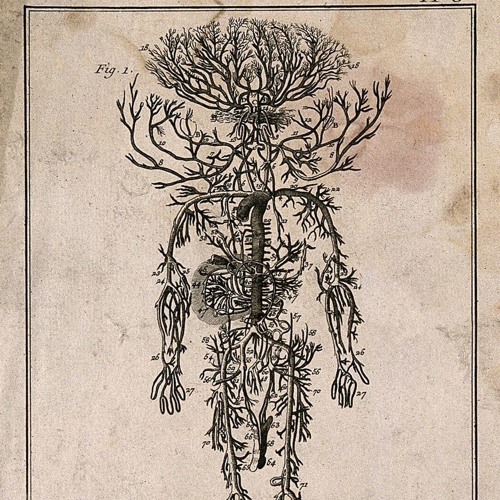
SOURCE:
1. Toxoplasmosis, behaviour and personality
2. Correlation of duration of latent Toxoplasma gondii infection with personality changes in women
3. Common Parasite Linked to Personality Changes
Moe is the founder of GnosticWarrior.com. He is a father, husband, author, martial arts black belt, and an expert in Gnosticism, the occult, and esotericism.















